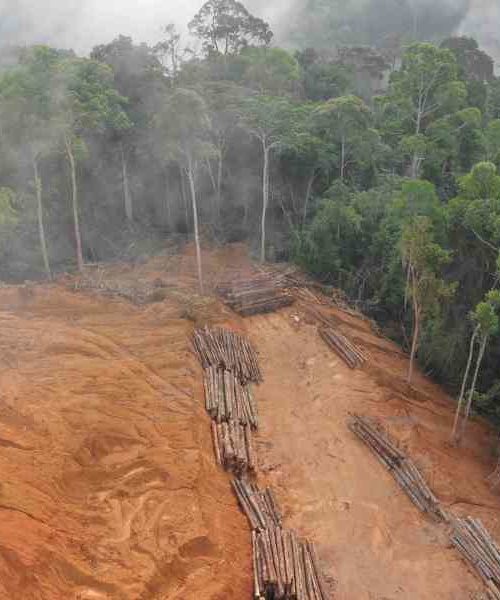Air pollution is a growing problem in many parts of the world, and it can have a devastating effect on our environment. In this blog post, we’ll look at 15 of the most serious environmental effects of air pollution, ranging from acid rain to global warming. Read on to learn more about how air pollution is affecting our planet and what we can do to stop it.
Air pollution is a major environmental issue that affects the health, environment, and well-being of everyone on Earth. It is caused by the burning of fossil fuels, which releases harmful gases and particles into the atmosphere.
These pollutants can cause a variety of health problems, acid rain, global warming and more. In this blog, we will explore 15 environment effects of air pollution and discuss how it can cause harm to both humans and the environment.
List of 15 Environment Effects of Air Pollution
1. Health Effects
Air pollution has a significant impact on human health. Long-term exposure to air pollution can cause chronic asthma, pulmonary insufficiency, cardiovascular diseases, and other serious health issues. In addition, particulates in the atmosphere can cause nasal irritation and swelling, as well as running noses. Unfortunately, some groups of people are more at risk from air pollution than others. These include the elderly, children, and those with pre-existing conditions such as asthma or heart disease. It is important to be aware of the potential health effects of air pollution and take steps to protect yourself and your loved ones from its damaging effects.
2. Acid Rain
Acid rain is known to be one of the most destructive environmental effects of air pollution. It is created when nitrogen oxides and sulfur dioxide, both byproducts of burning fossil fuels, interact with the atmosphere.
Acid rain can damage crops, buildings, aquatic life, and even human health. In aquatic environments, acid rain can be extremely harmful as it can change the pH levels of water bodies and cause acidification.
This can lead to fish kills and an overall decrease in biodiversity. Acid rain can also change soil chemistry, which can alter plant growth. Additionally, acid rain does not usually kill trees directly, but it can weaken them making them more susceptible to other environmental stressors.
3. Impact on Buildings
Air pollution can have a significant impact on the materials and surfaces of buildings. Sulphur dioxide and sulphates, nitrogen oxides and nitrates, chlorides, carbon dioxide and ozone are the primary pollutants that affect buildings.
Elevation of water is determined by a building material’s properties and characteristics of its surface which may influence water evaporation. Uncontrolled air pollution can lead to the deterioration of materials and surfaces, which in turn can cause damage to the structure or even collapse of buildings. It is important that buildings are monitored closely and regularly maintained to ensure they are not impacted by air pollution.
4. Ozone Layer Depletion
Ozone Layer Depletion is a major environmental issue that is caused by air pollution. This phenomenon involves the reduction of ozone levels in the stratosphere due to the presence of pollutants in the atmosphere, such as chlorofluorocarbons (CFCs). As a result, the ozone layer that naturally absorbs harmful ultraviolet (UV) radiation from the sun is weakened, potentially leading to serious health issues for humans, such as skin diseases, cancer, sunburns, cataract and quick ageing.
Ozone depletion can also lead to minimal plant growth and lower quality crops for humans. Furthermore, it might also cause habitat destruction and regional climate change. It is essential to reduce air pollution in order to prevent further ozone layer depletion and mitigate its potentially devastating effects.
5. Global Warming
Global warming is one of the most serious environmental effects of air pollution. The burning of certain substances, such as fossil fuels, releases carbon dioxide into the atmosphere which has a direct effect on global temperatures. As carbon dioxide levels increase in the atmosphere, it traps more heat from the sun which leads to a rise in global temperatures.
This global climate change can have far-reaching impacts on many ecosystems, including rising sea levels, extreme weather events and changes in species distributions. It is therefore essential that people take action to reduce air pollution and its effects on global warming.
6. Harmful Algal Blooms
Harmful algal blooms are a serious environmental threat caused by rising water temperatures and pollution.
Algae rapidly reproduces in warm and nutrient-rich waters, leading to oxygen depletion and blocking sunlight from reaching aquatic plants and fish, resulting in fish mortality and unsafe water. In addition, some algal blooms can produce toxins that can prove hazardous to humans. Unfortunately, harmful algal blooms show no signs of abating, making them a key environmental issue that must be addressed.
7. Contamination of Soil
Soil pollution is a major environmental issue that affects ecosystems, wildlife, and human health. Air pollution can lead to the contamination of soil by depositing pollutants such as heavy metals, organic compounds, and other toxic substances.
This can cause a range of health effects for humans, animals and plants. Contaminated soil can also lead to adverse changes in soil structure, fertility, and water movement, as well as an increase in soil erosion. It is important to understand the impacts of air pollution on soil in order to reduce or eliminate its negative consequences.
8. Depletion of Natural Resources
Air pollution has a detrimental impact on our natural resources, causing them to be depleted at an alarming rate. Pollution can directly kill plants and animals, destroy the environment and cause further dilemmas.
The release of hazardous chemicals into the atmosphere has a direct effect on the environment, leading to acid rain and global warming which can cause soil erosion and other weathering processes. This, in turn, can lead to a depletion of natural resources, such as water and minerals, which are necessary for life on Earth. This depletion of resources can have catastrophic consequences for humans and animals relying on them for survival.
9. Eutrophication of Water Bodies
Eutrophication of water bodies is an environmental effect of air pollution caused by excess nitrogen and phosphorus in water or air. It is a process in which the water body becomes overly enriched with nutrients, leading to an increase in the production of algae and macrophytes.
This can cause drastic changes to the surrounding ecosystem, as it affects the ability of aquatic species to thrive.
Eutrophication can also lead to reduced oxygen levels in the water, making it difficult for fish and other aquatic organisms to survive. Additionally, it can create harmful algal blooms, which can be toxic to both humans and animals. In order to reduce the effects of eutrophication, efforts should be made to reduce the amount of nitrogen and phosphorus entering water bodies from sources such as agricultural runoff and sewage.
10. Reduction in Visibility
Visibility can be drastically reduced as a result of air pollution. In many scenic areas across the country, air pollution has caused a dramatic decrease in the visual range.
This can be especially detrimental to animals, who rely heavily on their sight to survive, as well as to humans who wish to take in the beauty of nature without obstruction. Additionally, sulfur dioxide emissions have been linked to environmental adverse effects such as acidification of soil and acid rain (83). This further serves to impair visibility and subsequently diminishes the natural beauty of our environment.
11. Impact on Wildlife
Air pollution has a significant impact on wildlife. It can lead to direct mortality, injury, and disease, as well as physiological stress. In addition, long-term exposure to air pollutants can also alter the habitats of animals by increasing parasites and decreasing food materials.
Toxic emissions can cause various health problems for animals, including lung damage and asthma. Furthermore, air pollution can increase the vulnerability of wildlife to diseases and other environmental stresses. In particular, air pollution can disrupt endocrine function in animals, leading to a variety of health issues. Consequently, it is important to reduce air pollution levels in order to protect wildlife from the damaging effects of industrial activities.
12. Habitat Destruction
Habitat destruction is one of the most concerning environmental effects of air pollution. Air pollution can contribute to the destruction of habitats by affecting vegetation, leading to acid rain, and impacting wildlife and their ecosystems. Air pollution can damage crops and trees, as well as lead to reductions in agricultural crop and commercial forest yields. Acid rain also changes soil chemistry, which can alter plant growth and cause habitat destruction. Furthermore, air pollution can have serious repercussions for animals, such as increasing the risk of respiratory infections, heart disease, and lung cancer.
It is essential that we reduce our reliance on fossil fuels and take steps to reduce air pollution in order to protect our natural environment and its inhabitants.
13. Regional Climate Change
Regional climate change is a major environmental concern caused by air pollution. It occurs when pollutants, such as ozone and aerosols, are present in the atmosphere and cause changes in local weather patterns.
These changes include higher temperatures, more intense precipitation events, and increased frequency of extreme weather events. These changes can have disastrous impacts on the environment, such as increased water pollution, destruction of habitats, and loss of biodiversity. In addition to these direct effects, regional climate change can also contribute to global climate change by influencing global air circulation patterns and increasing the concentration of greenhouse gases in the atmosphere.
It is therefore essential that we take steps to reduce air pollution in order to protect our environment from the destructive impacts of regional climate change.
Conclusion
In conclusion, air pollution has an immense impact on the environment. From health effects to acid rain, ozone layer depletion to global warming and more, air pollution has had a serious and lasting effect on our world. It is essential that we work together to reduce air pollution and its impact, in order to create a healthier, safer environment for generations to come. With continued education about the dangers of air pollution, as well as increased regulation and enforcement of clean air standards, we can protect our environment from further damage.







